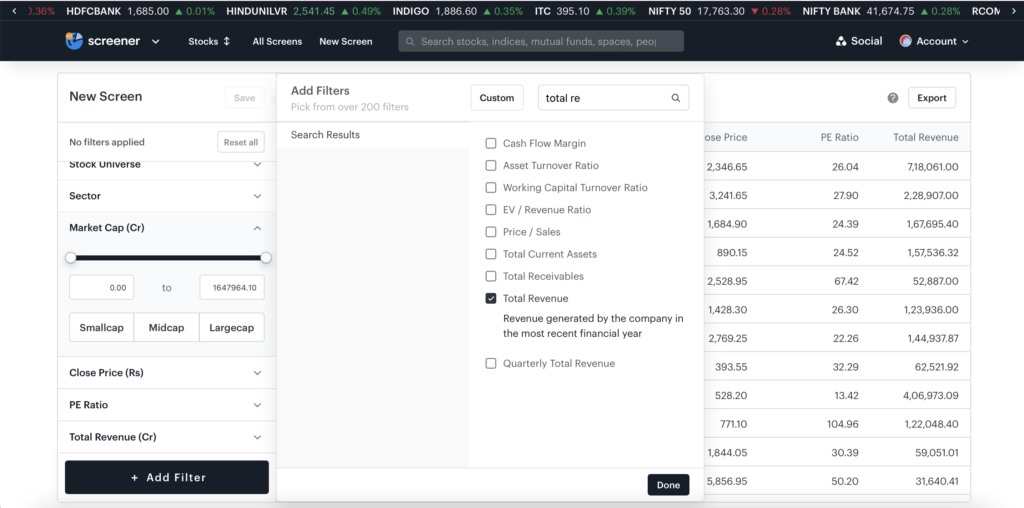Any business’ primary goal is to generate revenue. This revenue forms the base for its existence and function. A company can earn income from multiple sources. Now the total revenue of a business can be calculated using different methods and formulas.
Let’s read more about what total revenue is and its nuances.
What is total revenue?

The literal total revenue meaning is the amount of revenue a business generates from selling products or services during a given period. Though total revenue is just a metric, it can tell investors about a company’s pricing strategy, selling strategy, business growth, and more.
Businesses generate revenue through their core operations which can differ based on type, industry and more. Total revenue is directly proportional to business growth. The more revenue a company generates, the more the business grows.
Naturally, if there is a decline in the total revenue for a business, it may need to revisit its pricing model or revamp its sales strategy, marketing, and more.
Total Revenue – Main Highlights!
- Total revenue is the amount of money a business generates from the core activities, primarily sales or services.
- You can calculate total revenue by multiplying the total number of products sold by their prices or can locate values on the company’s income statement.
- Total revenue differs from marginal revenue in the sense that the latter indicates the increase in the revenue from selling one additional unit of a product or service during a given period.
Total revenue formula
You can use the total revenue formula given below to calculate the total revenue of your business:
Total revenue = Total number of units sold X Price per unit
The above total revenue formula is straightforward. If you want a more in-depth analysis of the revenue your business generated, you can calculate the average revenue per customer/user.
How to calculate total revenue?
Suppose you are using the method given above to calculate the total revenue. In that case, the only component you’ll need to determine the total revenue your business generates includes the number of units your business sold and the price per unit.
Once you have determined these amounts, you can track them regularly. It will help you analyse how your business has performed when compared with past performance. Though other factors contribute to your business performance, such as production costs, and other expenses, these don’t form part of the calculation of total revenue.
Additionally, you can calculate the total revenue using the company’s income statement. This statement covers all revenue and expenses over a period of time. You can subtract revenue from expenses or find the line item in the income statement that gives the total revenue figure.
Apart from the above-mentioned methods, there’s another way to calculate total revenue. You can just add up all the revenue from different sources.
In the end, revenue is why a business function and exists. By analysing your past performance, and revenue sources, you can make better decisions for your business in the future.
Total revenue example
Let’s look at a total revenue example. Considering the above formula, let’s calculate the total revenue for a retail store and a consulting service.
Suppose your business sells 100 goods costing Rs. 50 each.
Total revenue = Number of products sold x price per unit = 100 * 50 = Rs. 5,000
Suppose you offer consulting services; you can use an hourly rate to calculate revenue. If your rate is Rs. 100 per hour and you work with one company for 20 hours, multiply your hourly rate by the number of hours worked.
Total revenue = Number of hours worked x price per hour = 20 * 100 = Rs. 2,000.
Use Tickertape Stock Screener to find the total revenue of a company. Analyse a company quickly using 200+ filters and pick the best one that suits your investment objective.

Total revenue vs marginal revenue
Different revenue streams represent different growth elements for businesses.
Marginal revenue denotes the increase in a business’s total revenue from selling one additional unit of a product or service. For instance, if a company sells 100 pens for Rs. 10, its total revenue is Rs. 1,000. Now, if the company sells one additional pen for Rs. 10, this becomes its marginal revenue.
Marginal revenue is directly related to a business’s total revenue. Your total revenue will increase as long as marginal revenue is more than the cost of producing an additional unit of a product. However, when the cost of production exceeds the marginal revenue, it may not be ideal to continue production.
You can use the formula given below to calculate marginal revenue:
Marginal revenue = Change in total revenue / Change in the number of units sold
Conclusion
The income that a company earns from selling its products and services is called total revenue. The total revenue depends on several factors, ranging from industry, company type, macro/micro factors, pricing etc. Study the total revenue of the company along with the other metrics like average revenue and marginal revenue to have a detailed insight into a company.



